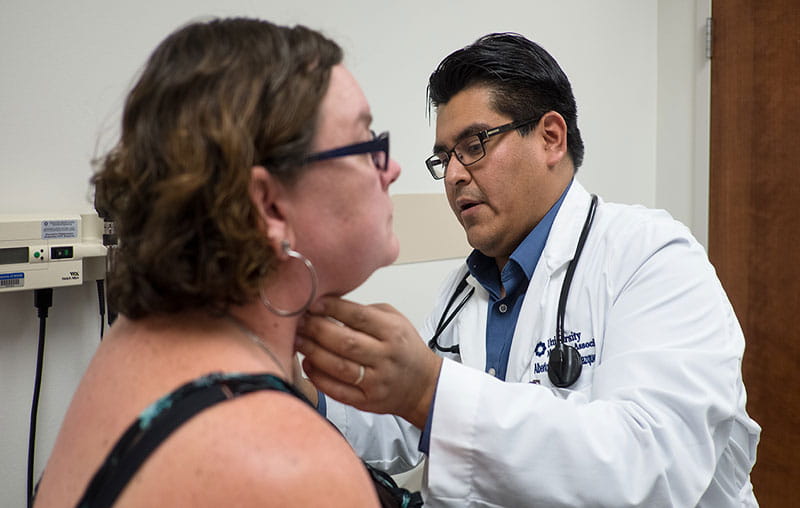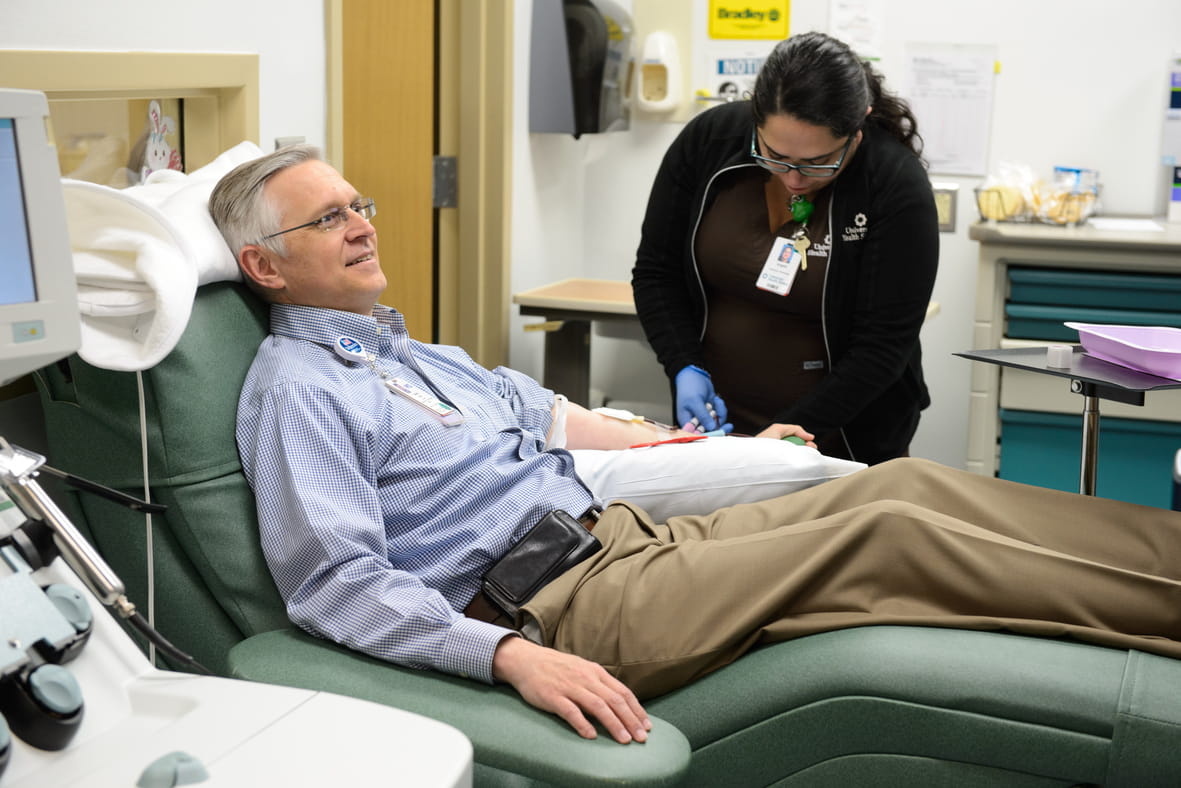October is Breast Cancer Awareness Month, and now is a great time to schedule your regular mammogram. Most women over the age of 40 should get a mammogram once every year.
Dr. Thanh Van is a radiologist at University Health who performs mammograms. Dr. Van answers common questions and dispels mammogram myths in this blog.
What Is a Mammogram?
A mammogram is an X-ray image of the breast tissue used to screen for breast cancer. The goal of mammography is to detect breast cancer at an early stage, which can result in treatments that are less severe and potentially curable.
Screening vs. Diagnostic Mammograms
Screening mammograms are performed on women who are asymptomatic, meaning they do not have signs or symptoms of breast cancer.
Diagnostic mammograms are performed on women with a breast complaint or symptom, such as nipple discharge or if they feel a lump.
Women with a family history of breast cancer may have screening mammograms if they do not have a specific breast complaint.
We recommend that women begin screening mammograms at age 40 and yearly thereafter. Women with specific genetic mutations or at higher risk, such as having a first-degree relative with pre-menopausal breast cancer, may begin screening earlier. They should discuss this with their medical provider.
Does it Hurt to Get a Mammogram?
While some women experience minor discomfort during a mammogram, most do not experience any pain. “Some women do experience breast pain, but it's not unbearable for most women,” Dr. Van said.
To optimally obtain a mammogram, the breast tissue needs to be compressed. Some women may experience discomfort while the breast is in compression. The compression and X-ray lasts a very short time. Most women do not find the mammogram to be unbearable.
If a woman has an infection or an inflammatory process, a mammogram may be deferred, and an ultrasound exam performed first.
If you have an infection in your breast like mastitis, getting a mammogram can be painful. In this case, you can ask your provider for an ultrasound instead. Once the infection clears up, your provider may order a regular mammogram.
What Is a 3D Mammogram, and Is it Better than 2D?
A 3D mammogram collects many images of the breast at different angles and reconstructs the images into a 3-dimensional picture of the breast.
Breast tissue in women vary, with about half of women having dense breast tissue, which may decrease the sensitivity of the exam, meaning it may be more difficult to see an abnormality.
With a 3D mammogram, you may be able to parcel out the density and see abnormalities better.
Most insurance covers 3D mammograms. If you’re not sure, contact your insurance provider.
What to Expect at Your Mammogram Visit
Generally, this is what you can expect when you arrive at the doctor’s office for your mammogram:
- You will fill out a questionnaire regarding your medical history. This may ask you questions like:
- Your age
- Any symptoms you may have
- Age you began menstruating
- Age you had your first child
- Your family history
- If you’ve ever had radiation to your chest
- Where your last mammogram was
- If you’ve ever had a breast biopsy
- You will dress into a gown and the technologist will perform your mammogram. Most mammograms consist of two views of each breast, but additional views may be necessary to include all the breast tissue and arm pits (axilla).
- The technologist will move a flat plastic plate down on top of your breast. This will squeeze or compress your breast gently against the X-ray plate. This pressure is needed to keep the radiation level as low as possible. It also helps take the best picture of your breast tissue.
- You change back into your clothes and can go home. You’ll receive your exam results by letter in the mail.
How to Prepare for a Mammogram
There is no special preparation. On the day of the exam, dress comfortably and do not wear perfumes, powders or deodorant over the breasts or armpits, which may produce artifacts on the exam, which could result in additional imaging or a call back to exclude a true abnormality.
“Deodorant can obscure lesions or make it look like there are things there that aren't,” Dr. Van said.
What Happens if the Mammogram Detects an Abnormality?
After your mammogram, your health care provider may call you in to discuss an abnormality in your results. Most of the time, the abnormality doesn’t indicate cancer. According to the American Cancer Society, fewer than 1 in 10 women called back after their mammogram are found to have cancer.
If an abnormality is suspicious for breast cancer, your provider will recommend a biopsy. Many biopsies can be performed under ultrasound or with mammogram guidance, which is usually an outpatient procedure done with local anesthesia.
The results may show overlapping breast tissue or a noncancerous cyst, which can be determined in your follow-up visit with an ultrasound or MRI.
If the biopsy comes back positive for cancer, you will be referred to an oncologist and a surgeon to talk about next steps.
Schedule Your Mammogram at University Health
Call 210-358-2725 to schedule an appointment for your mammogram or learn more online.





